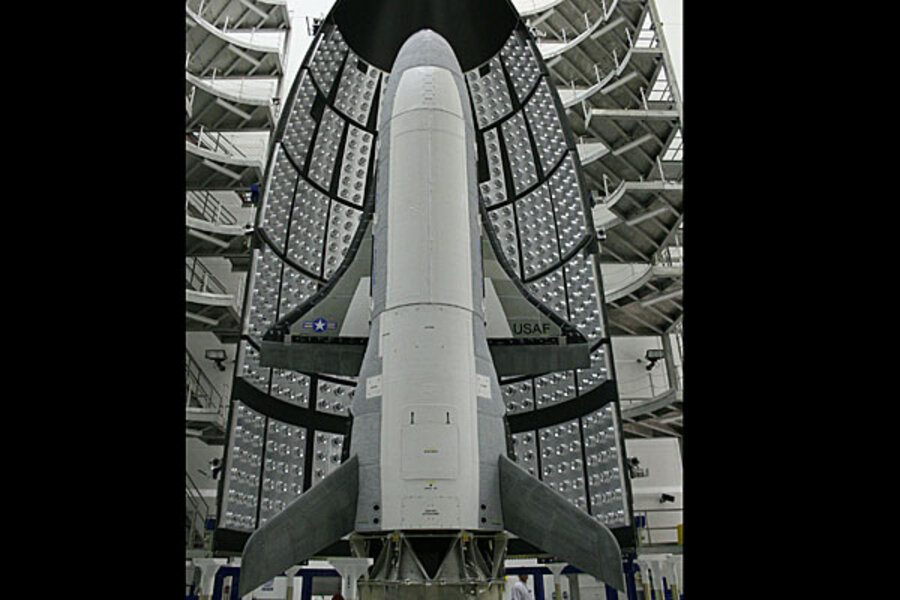Secret shuttle launch: US military's X-37B to spy on Middle East?
Loading...
| Cape Canaveral, Fla.
The military's small, top-secret version of the space shuttle rocketed into orbit Tuesday for a repeat mystery mission, two years after making the first flight of its kind.
The Air Force launched the unmanned, robotic spacecraft Tuesday hidden on top of an Atlas V rocket.
It's the third flight for the X-37B spaceplane. It circled the planet for seven months in 2010. A second X-37B spacecraft spent more than a year in orbit.
These high-tech mystery machines — 29 feet long — are about one-quarter the size of NASA's old space shuttles and can land automatically on a runway. The two previous touchdowns occurred in southern California; this one might end on NASA's three-mile-long runway once reserved for the space agency's shuttles.
The military isn't saying much if anything about this new secret mission. In fact, launch commentary ended 17 minutes into the flight.
But one scientific observer, Harvard University's Jonathan McDowell of the Harvard-Smithsonian Center for Astrophysics, speculates the spaceplane is carrying sensors designed for spying and likely is serving as a testbed for future satellites.
While acknowledging he does not know what the spaceplane is carrying, Mr. McDowell said on-board sensors could be capable of imaging or intercepting transmissions of electronic emissions from terrorist training sites in Afghanistan or other hot spots.
The beauty of a reusable spaceplane is that it can be launched on short notice based on need, McDowell said.
What's important about this flight is that it is the first reflight.
"That is pretty cool," McDowell said, "reusing your spacecraft after a runway landing. That's something that has only really been done with the shuttle."
The two previous secret flights were in 200-plus-mile-high orbits, circling at roughly 40-degree angles to the equator. That means the craft flew over the swatch between 40 degrees or so north latitude and 40 degrees or so south latitude.
That puts Russia's far north out of the spaceplane's observing realm, McDowell noted. "It might be studying Middle Eastern latitudes or it might just be being used for sensor tests over the United States," he said.
McDowell speculates that this newest flight will follow suit.
The US military contracted for this flight with United Launch Alliance, a firm that puts objects into orbit using Atlas and Delta, rockets. It's a joint partnership between Lockheed Martin and The Boeing Company.
RECOMMENDED: Are you scientifically literate? Take the quiz
Copyright 2012 The Associated Press.





